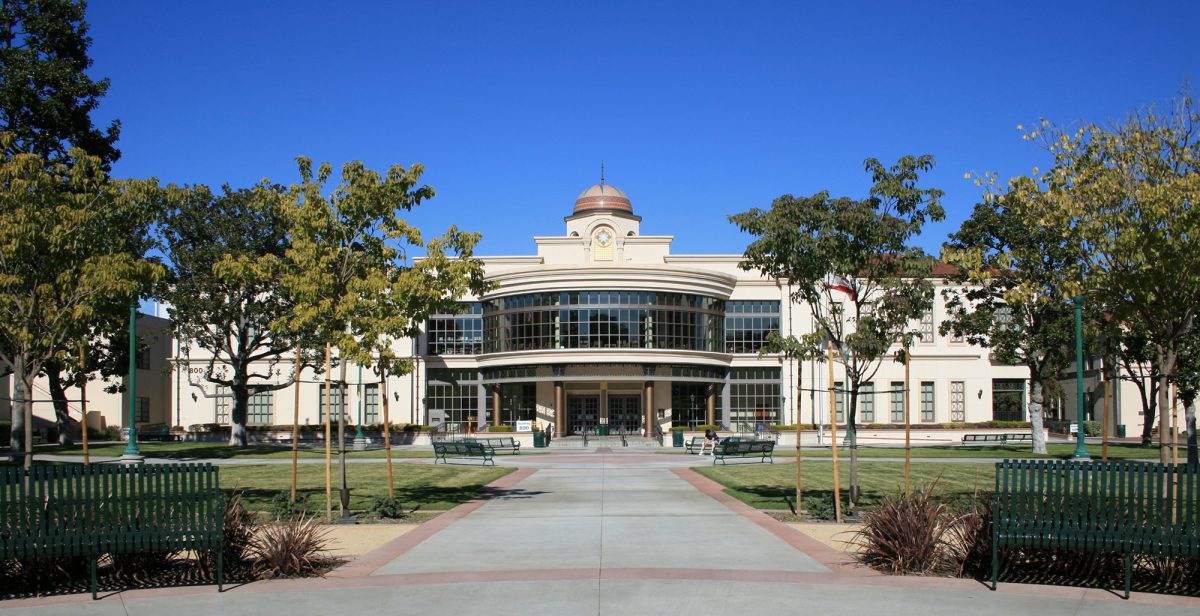Wars have been fought over every resource that you can think of with tea, salt, and opium being just a few examples of commodities that humans have killed for.
With climate change, humans will be fighting over basic resources like water instead of commodities.
We have already begun to see this conflict arise in Southern Asia between China, India and Pakistan. If climate change worsens, it could mean war between these countries and possibly around the world.
Instructors from the Natural and Social Sciences divisions at Fullerton College came together on Oct. 7 to present on the Intergovernmental Panel on Climate Change report which speaks on the effects climate change will have on the ocean, land and atmosphere.
Although there is no immediate concern for Orange County running out of water, Geography Instructor Ruben Lopez explained in an interview, it will happen eventually if nothing is done to conserve water and stop the impacts of climate change.
California has several water resources it uses to supplement water to its citizens and underscoring the increase in droughts is a decrease in the water supply.
According to the California Department of Water Resources, “California receives 75% of its rain and snow in the watersheds north of Sacramento. However, 80% of California’s water demand comes from the southern 2/3 of the state.”
Effects on Southern California
Southern California has already begun to feel the first blows from the climate change hammer. Droughts that used to last for short periods now last much longer, are more severe and have become more frequent.
According to the U.S. Department of the Interior, the Colorado River and its tributaries supply more than 1-in-10 Americans with some, if not all, of their municipal use water, including drinking water.
Most of Southern California’s drinking water comes from the Colorado River.

Experiencing the driest 16-year period in over 100 years, due to an extended drought in the region, the Colorado River is in the fifth driest 16-year period in the last 1200 years also according to the U.S. DOI.
“…we are becoming more of a desert-like environment over time,” Lopez said. So Fullerton, with all its greenery and with water resources that are already stretched a little bit thin, “That’s going to become more of an extreme situation, not just obviously in Fullerton but throughout Southern California.”
Lopez also talked about the weather effects climate change will have on Southern California. Explaining that our weather will become far more sporadic and intense, leaving us with intense periods of drought, followed by periods of intense rainfall and flooding.
Causes of climate change
Some gases have been labeled as greenhouse gases—carbon dioxide, methane, and nitrous oxide, to name a few. Greenhouse gases have a special effect in which they trap and reflect infrared radiation in the atmosphere.
“…we are currently moving at about ten times faster the natural climate change rate,” Lopez said. This is due to what has been called the “Greenhouse Effect.”
Climate change is a natural phenomenon that has occurred over the Earth’s long lifespan.
The planet goes through regular heating up and cooling down cycles over thousands of years. So although it happens naturally, humans have impacted the process of climate change.

One way to think about the greenhouse effect is to imagine a car parked in the sun with the windows rolled up. The sun heats the vehicle’s interior, which then begins to radiate heat, but because there is glass in the way, the heat can’t escape the vehicle’s interior.
Sunlight heats the Earth’s surface, the surface radiates heat into the atmosphere and the atmosphere traps the heat causing temperatures worldwide to increase.
A brief history of climate change
Fullerton College Environmental Science Instructor Tom Morris presented a brief history on the study of climate change.
In the 1860s an Irish physicist, John Tyndall, began the first experiments that showed carbon dioxide and water vapor in the atmosphere directly contributed to keeping the Earth warm. Through experimentation, Tyndall discovered that certain gases absorbed and reflected infrared radiation.
Svante Arrhenius, a Swedish scientist, estimated that increases in global carbon dioxide emissions could increase global temperatures. His research came out in 1896 during the industrial revolution era when humanity began to increase carbon output at a shocking rate.
Charles David Keeling, an American Scientist, created the world’s first network to monitor carbon emissions in 1960. He discovered that carbon dioxide in the atmosphere increased every year.
Seven years later, Syukuro “Suki” Manabe, a Japanese meteorologist, inserted the carbon emissions data from Keeling into his lab’s climate model, which created the first climate model prediction of global warming.
Much of what we know about climate change comes from these pioneers. Manabe’s climate model predicted that carbon was causing global temperatures to rise, resulting in climate change worldwide.
Thanks to the efforts of each of these initial scientists, we can better understand what our carbon emissions are doing to the environment.

“Climate change is happening now, and not in some distant future. We are already feeling the impacts,” Lopez said.
Since climate change is a complex and nuanced topic and discussions are often filled with jargon, overwhelming numerical data and scientists who often over-explain the subject. The Fullerton College instructors explained the IPCC report as simply as possible.
The full IPCC report will be released in 2022 and more information on ways to counteract climate change will be released in follow-up group reports from the IPCC. You can read the current report here.


















